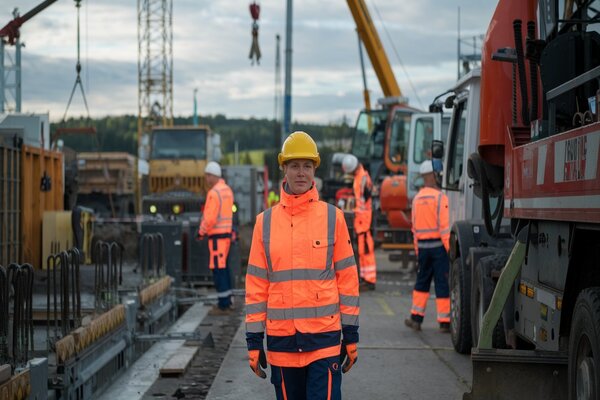Choose the Right High-Visibility Workwear for Your Industry
High-visibility workwear has turned into an essential element in any on-the-job safety routine within various industries. Whether one works in the construction or roadwork sectors, or in any other environment that requires high visibility, getting the right equipment could make all the difference between being safe or placing oneself in danger. With a variety of choices in today's market, it's quite difficult to choose appropriate workwear for your needs.
In this blog, we're going to take you through some of the key factors that you should consider while selecting high-visibility workwear for your trade.
1. Understand Your Industry Requirements
Every industry has its special set of regulations when it comes to high-visibility workwear. Start with some research into your industry and what sets of regulations concern you. You will know then that the workwear you have chosen will meet the required safety standards and keep you compliant with the law.
2. Consider the Work Environment
The environment where one works matters much in determining the kind of high-visibility workwear. The work that is usually done outdoors, especially those under extreme weather conditions such as rain, requires gear protection. Such examples are the high visibility waterproof jackets that people working in rainy conditions wear. Lightweight and breathable materials will suit hot climates to avoid overheating. Consider visibility: low light to night-time requires reflective strips on clothes.
3. Select the Appropriate Class of High Visibility Workwear
High-visibility workwear is often categorized into different classes, based on the level of visibility they provide:
- Class 1: Has the lowest visibility and is normally used in an environment where traffic does not exceed 30-40 kph. It is ideal for workers who are near big vehicles, such as warehouse staff.
- Class 2: More visibility and this class is ideal for those areas where buildings, flats, and houses are coming up. Construction workers, utility workers, and surveyors use this class.
- Class 3: Provides the highest possible visibility and is required for those workers who are in high-risk areas with traffic that surpasses the normal prevailing speeds or where workers are highly vulnerable to passing traffic. This class is common among road construction workers, emergency responders, and tow truck drivers.
4. Evaluate Material Durability and Comfort
When it comes to choosing high-visibility workwear for heavy-duty jobs, durability is key. The material must be able to resist tears and wear and tear from abrasion, among other forms of deterioration. Common durable fabrics include polyester, applied in most jackets and vests of high visibility, and cotton blends, presenting a good compromise between comfort and durability.
Remember, comfort is never to be sacrificed, as it does affect your productivity and well-being a lot. For regular workwear, select the ones that provide ample room to flex your body without being too loose or too constricting. Adjustable features, such as cuffs, waistbands, and zippers, help improve your comfort level and give you a good fit.
5. Opt for Additional Safety Features
While high visibility is the primary function of this workwear, additional safety features can further protect you in hazardous environments. Consider gear that includes:
- Reflective Strips: These increase visibility in low-light conditions, especially when exposed to headlights.
- Flame-Resistant Materials: Essential for workers in environments with exposure to fire or electrical hazards.
- Pockets and Tool Loops: For convenience, especially if you need to carry tools or equipment.
Some workwear also offers padding or reinforcement in high-wear areas, which can be beneficial in physically demanding jobs.
6. Budget Considerations
Sometimes, while tempting, the cheapest option is often in high-quality workwear that, for the most part, provides the best value for money in the long run. This is because cheap materials will tend to wear out quite quickly, and you can end up replacing your workwear very many times and, in effect, lose money somehow in the equation. Consider cost, quality, and the specific needs of the job in terms of finding a balance. It could be worth checking with your employer to see if they offer any subsidies or reimbursement for safety gear; this could alleviate the financial burden.
7. Maintenance and Care
Proper maintenance will ensure that your high-visibility workwear is effective and lasts long. For the proper washing and wear conditions, always follow the manufacturer's instructions on care conditions. Generally speaking, you should avoid using bleach or harsh detergents since these will destroy the reflective properties of the fabric. Check your workwear regularly for wear and tear and discard any garments that are beyond providing good visibility or protection.
8. Brand Reputation and Reviews
Finally, there is the brand reputation to consider when buying. We at Unito have been in the business for a long time, making quality protective gear.
Your choice of high-visibility workwear for your industry will depend on careful consideration of several factors: industry regulations, work environment, material durability, and additional safety features. Investing in gear from us at Unito is one surefire way to comply with standards in safety while keeping yourself protected in hazardous conditions.




